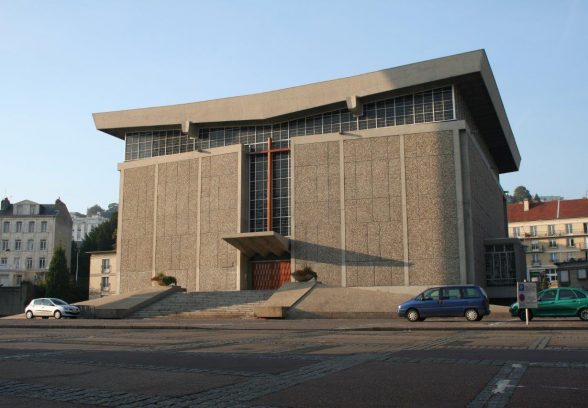This website uses cookies
This website uses cookies to enable it to function properly and to analyse how the website is used. Please click 'Close' to accept and continue using the website.



This comprehensive introduction to post-war Le Havre was organised by Susannah Charlton and Catherine Croft. The major themes were reconstruction, concrete, ‘classical structuralism’, Auguste Perret, planning and pre-fabrication. The visit focused on the central and dockside areas of the city obliterated by Allied bombs in 1944. We began in the ‘appartement témoin’: a reconstruction of a 1960s interior, it demonstrates Perret’s remarkably progressive designs for modern living based on his rigorous 6.24m module, with spacious, light-filled rooms, well-fitted bathrooms and kitchens, and original examples of 1950s and 1960s ‘reconstruction’ furniture.
We then went from the microcosm to the macro-plan and Perret’s vision for the city, as viewed from the top of the tower of the Hotel de Ville (Perret, completed by Jacques Tournant, 1949 – 58). Also clear from this vantage point are the roofs of two buildings designed to look like open books: the Eglise Saint-Michel and the Bibiliothèque Armand Salacrou (Jacques Lamy and Jacques Tournant, 1967). We were also able to get a close-up of some of Perret’s trademark claustras – in evidence all over the city – before looking at the Salle de Conseil Municipal and its fine tapestry by Jean Lurçat (late 1960s).
On to two buildings which proved there were exceptions to Perret’s classical rules. The modernist Eglise Saint-Michel (Michel Colboc, 1964) comprises a tall, thin external concrete bell tower to represent a candle next to a box-like nave with high walls and clerestory. The interior is spectacular, with smooth surfaces of concrete, stone and varnished wood, and a golden-yellow glow from the dalle de verre and stained glass by Atelier Boutzen. Likewise the Musée Malraux (Atelier Perret, 1961) with its flexible, open-plan gallery inside a boxy, linear structure of glass, aluminium and steel which captures the pearly, diffuse light so valued by Boudin and the Impressionists.
We managed to arrange access to the now empty pentagonal Halle aux Poissons with a béton brut coffered ceiling and central pillars above a fish-cleaning area (PC Charles Fabre and Jean le Soudier, 1950). The thriving indoor market (Andre le Donner, Charles Fabre, Jean le Soudier, 1960) has a parabolic concrete roof which is as close as close as Perret’s architects came to curves and waves.
The second day began with an enjoyable swim at Les Bains des Docks (Jean Nouvel, 2008), part of the ongoing docks regeneration project. We saw the moderne railway station (Henri Pacon, 1932) and its grand hall with 1930s mosaics (Jacques Simon) and, opposite, the glamorous, recently restored façade of the 1937 Piscine Municipale.The steel footbridge (Guillaume Gillet, 1969) over the C18 Bassin du Commerce leads to the former Bourse (Otello Zavaroni with Jean Louvet and René Dechenaud, 1947 – 53). The front elevation is classical and impressive, its relative ostentation a contrast to Perret’s modest style, but we discovered lively Fifties patterns and details on the other sides. Now a hotel and casino, it retains many original and untouched internal decorations, including an immense semi-abstract fresco by Nicholas Untersteller and a 45m black and white mural of sea creatures by Paul Lemagny.
Altogether different is Le Volcan (Oscar Niemeyer, 1982), now a Médiathèque, in effect two pure white concrete funnel-style blobs in Niemeyer’s curved, organic, fluid style. The tour ended at the monumental Eglise Saint Joseph (1952 – 54), one of Perret’s finest projects. Outside, the 107m spire could be seen as a lighthouse or a skyscraper, while inside it has an industrial feel offset by the play of light and colour from the abstract glass by Marguerite Huré. The darkened interior, massive concrete columns and the cinema-style seating make it an intense experience.
Many thanks to the Maison du Patrimoine and to our knowledgeable guide, Lise Legendre.
Jane Brocket
C20 members visited Le Havre in June 2016

Become a C20 member today and help save our modern design heritage.
Comments